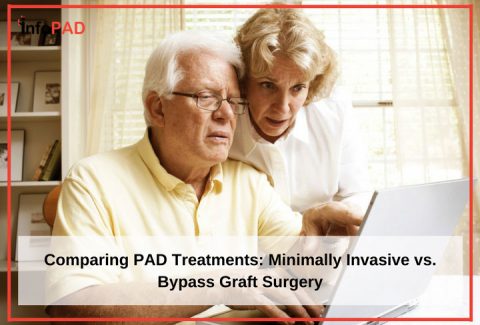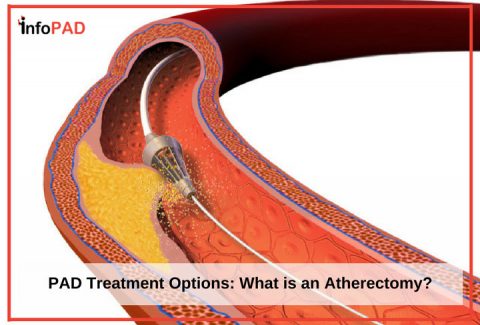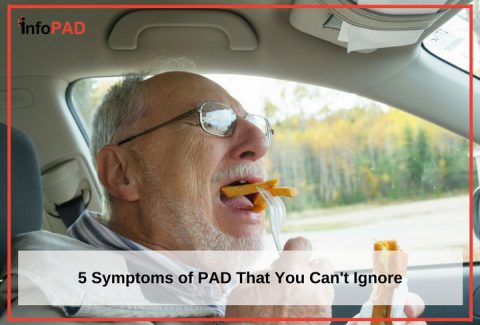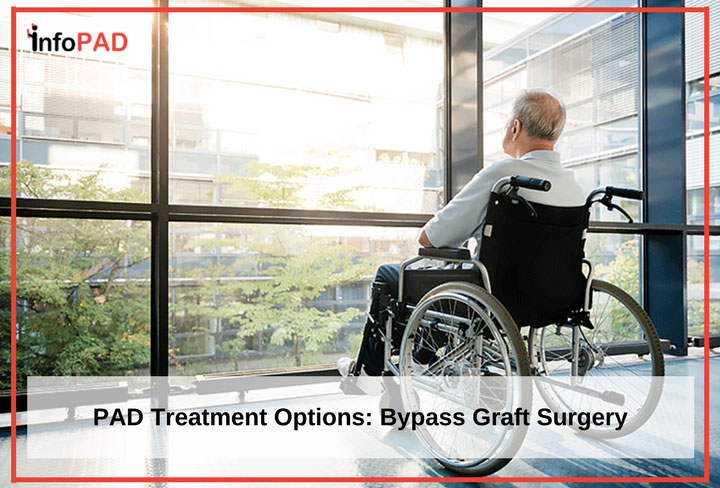
Peripheral artery disease (PAD) occurs when your extremities, particularly your lower limbs, are not receiving adequate blood supply due to a narrowing or blockage of your blood vessels caused by plaque buildup. This common circulatory issue affects 1 in 20 Americans over the age of 50.[i] Peripheral artery disease treatments are varied, and depend on the severity and location of the narrowing or blockage.
When PAD is detected early, or is in an easily accessible area, minimally invasive PAD treatment options such as angioplasty, stenting, or atherectomy can be used to either break up plaque or push it flat against the vessel wall. All of these techniques result in an increase in the inner diameter of the affected blood vessel, and an improvement in the blood flow. However, if the blockage is in an advanced stage; in a difficult to access location; or is too hardened to remove effectively, a procedure called bypass graft surgery is often the only treatment available to avoid severe complications, such as amputation or even death.
RELATED: How to Prepare for Your PAD Consultation
What is Bypass Graft Surgery?
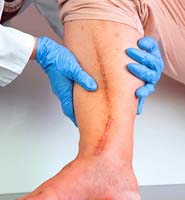
Bypass surgery in the leg reroutes blood around the blocked artery, providing an alternative pathway for blood to flow and deliver oxygen-rich blood and nutrients to the limb. This is a vastly different method than the minimally invasive procedures mentioned above, where plaque is removed, pushed away, or minimized. Bypass graft surgery can be performed in the hip, thigh, armpit, knee, and near the heart, but is described in detail below for surgeries performed in the leg.
What Are the Benefits of Bypass Graft Surgery?
- Major complications of bypass graft surgery are rare, and most patients have relief from the symptoms of PAD.[ii]
- Bypass surgeries can be performed when patients are either not candidates for minimally invasive treatments, or when minimally invasive treatments fail. (However, bypass surgery as a primary treatment option has been shown to be more effective than when it is performed after failed minimally invasive techniques)[iii]
Are There Any Disadvantages To Bypass Graft Surgery?
- Because many long surgical incisions are required, the most common complaint after bypass surgery involves complications with wound healing. One in five patients experience some type of healing issue, ranging from swelling and minor infections to complications that require additional hospitalizations.[iv]
- When compared to minimally invasive treatment options, bypass surgery requires a hospital stay, longer recovery time, and a greater expense than angioplasties, stenting, and atherectomies.
Why Would Your Physician Recommend Bypass Graft Surgery?
Bypass surgery is frequently chosen when the PAD specialist believes there is a severe risk of losing the limb if a less invasive measure is taken. This can be indicated by extreme pain in the limb, open wounds that will not heal, or gangrene.[v] All of these symptoms indicate that the flow of blood to the limb is reduced so severely that amputation is imminent if flow is not restored.
Bypass surgery is typically reserved for advanced stages of PAD, but only a PAD specialist can determine the best option for you. For assistance in your search for a PAD specialist, seek a referral from your primary care physician or search for a PAD doctor online.
Early Detection of PAD Can Help To Avoid the Need for Surgery
Speaking with your physician about your symptoms and getting diagnosed early can help avoid surgery as a PAD treatment. Once diagnosed and knowing that surgery is not the only option, make sure to speak to your physician about minimally invasive PAD treatment options. Angioplasty, stenting, or atherectomy, are techniques that are effective options for many PAD cases and have a lower risk of infection compared to surgery.
UP NEXT: Comparing PAD Treatments: Minimally Invasive vs Bypass Graft Surgery
Sources:
[i] http://www.mayoclinic.org/diseases-conditions/peripheral-artery-disease/basics/definition/con-20028731
[ii] http://my.clevelandclinic.org/services/vascular-surgery/vs_venous_disease_surgical_bypass
[iii] http://www.ncbi.nlm.nih.gov/pubmed/20435263
[iv] http://www.surgery.ucsf.edu/conditions–procedures/lower-extremity-bypass-surgery.aspx
[v] http://www.webmd.com/heart-disease/tc/peripheral-arterial-disease-of-the-legs-surgery
